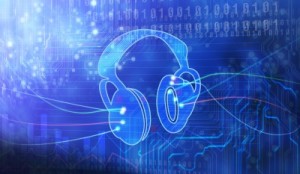Learning Ears®/TLP®
Language Development, Reading and Comprehension
This exciting new program, researched and developed by Moyers Learning Systems, provides a huge amount of auditory stimulation. It overlaps the ear-voice training provided during Learning Ears with the therapeutic music of The Listening Program® .
In order to be a functional communicator and learner, an individual must be able to listen and think, read and think, and say what he wants to say in a few words. The ability to accurately read and receive oral language is critical. In our experience, the majority of comprehension problems are related to poor decoding of written material and weak receptive language for oral material. When words are not read or heard accurately and efficiently, comprehension will be affected.
Listening is an active process and requires intention and specific abilities to be able to receive and understand information from our body and our environment. Not only does our auditory system protect us from noises and sounds we do not want to hear, it also provides energy to the brain and body that results in effective processing and thinking necessary for coordination, movement, balance, language and literacy.
People of all ages can benefit from the training and exercises in the Learning Ears®/TLP® program. It is used effectively with students who are challenged by language delays, communication disorders, learning disabilities, autistic spectrum disorders, developmental delays and attention deficits. It is also appropriate for individuals who want to improve their listening and communication skills for professional and personal growth.
Clients, who complete the basic Learning Ears®/TLP®program, will usually see improvement in their overall listening, language, communication and learning abilities. The exercises and assignments produce better voice quality, intonation, verbal expression and pronunciation. Motor skills, handwriting, and written expression can also improve. New skills allow clients to meet physical, academic and social challenges with increased motivation, new strategies and successful outcomes.
An important premise behind sound therapy is that it stimulates the brain to pay attention to a fuller spectrum of sound, allowing the auditory system to work more efficiently and providing the listener with alertness and better auditory input.
As the auditory system is strengthened, it facilitates more efficient learning and communication so that whatever challenges the individual is dealing with can be overcome, allowing the individual to operate with a new set of skills.
The Learning Ears® program trains the voice to incorporate the full spectrum of sound frequencies that the ear can now hear. The student uses a microphone in conjunction with therapeutic listening while completing a variety of language, reading and comprehension activities. In this way, the voice becomes the on-going stimulus for the auditory system.

